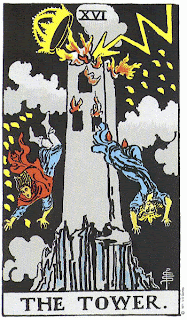The wide open expanse of the view,
the true condition of mind
is like the sky, like space: Without centre, without edge, without goal.
~ Dzogchen Master Shabkar Rinpoche
At the basis of all spiritual and psychic development is the practice of meditation. It not only increases clarity and awareness but restores wholeness within our spiritual and physical bodies. It has been around for thousands of years and can be used by anyone at any time, whatever their state of health.
Meditation is a way of life. It describes a state of consciousness, when the mind is free of scattered thoughts and patterns. There are many different ways to meditate, such as using colours, mantras or chanting. The techniques I offer in this article have been passed on to me by a Thai Buddhist Master and a Tibetan Rinpoche. Both are highly respected teachers and I was very fortunate to receive their teachings.
What is Meditation?
Meditation means awareness. Whatever you do with awareness is meditation. Watching your breath, listening to the birds or even walking is meditation. As long as these activities are free from any other distraction to the mind, it is effective meditation. The objective of meditation is to stop the mind chattering and to cease internal dialogue. In essence, meditation means ‘a cessation of thought process’.
Preparation
Seating
There are many different ways to sit during meditation, but the most common are either sitting on a chair (Egyptian position) or on a cushion on the floor (Buddhist position), either cross legged or kneeling. Everyone is different, so choose the seating position that makes you feel most comfortable.
Breathing
Meditation is all about the breath. Notice that when we are stressed, we breathe fast and shallow, which leads to further stress. In meditation, the objective is to breathe deeply and slowly, thus reducing stress and allowing us to feel calm. After meditating regularly, breathing slowly and deeply will come naturally.
Posture
It is very important to maintain a straight spine during meditation and not slump. Think of your back straight, like a stack of coins.
Focus
Many people fall asleep during meditation. This is not meditation. Meditation is a state of awareness so it is important to remain alert and focused and not allow the mind to wander. Eyes can be either open or shut. For beginners, I would recommend starting with eyes closed as it is easier to maintain focus. However, having eyes open is the optimum way to meditate, focusing your eyes gently on an object or point of reference.
When and Where to Meditate
The traditional times of meditation are at dawn and dusk but you can meditate at any time. Try to stick to a routine and do it the same time every day. Create a quiet, sacred space for yourself where you will not be disturbed by the telephone or other distractions.
How to Meditate
Take three deep breaths slowly in and out, relax and centre yourself.
Close your eyes and breathe slowly in and out through the nose. Let your attention focus on the breath. A general guide to breathing is ‘in’ for four breaths, hold for two, then ‘out’ for four breaths. The more you practice, the slower and deeper your breathing will become.
As you meditate, your mind will begin to wander. When this happens, just allow your thoughts to come and go without holding on to them, then gently bring the mind back to the breath.
- Thirty minutes is a good amount of time to meditate, but even 10 minutes will be beneficial.
Basically, that’s it! So easy and so simple.
A lot of people are reluctant to meditate either because they think it’s too difficult or because they become easily distracted. Remember,
it takes discipline to meditate and it takes practice to still the mind. The (ego) mind will create all sorts of excuses to not meditate but once you start seeing the benefits, you’ll love it. You may even find that meditation becomes addictive.
Grounding
It is important to ground yourself after meditating. You may feel light headed when you finish, so try to come back to your body slowly. A useful grounding technique is to pat your legs/calves or gently stomp your feet on the ground. Always drink a glass of water when you finish as it helps to ground and rehydrate.
At the end of a meditation, I always dedicate my practice to a higher source and offer thanks. Happy meditating!
 This month’s tarot card is the Tower. The numerical value of the Tower card is sixteen and it is ruled by the planet Mars.
This month’s tarot card is the Tower. The numerical value of the Tower card is sixteen and it is ruled by the planet Mars.
